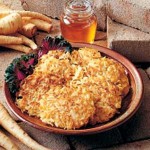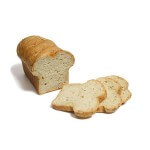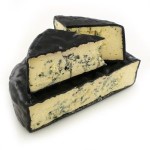Kinds Of Fruits In The Philippines
Given its colorful history and geographical location, the Philippines is home to a wide variety of delectable dishes with unique, distinctive flavor. Aside from hearty meals inspired both by its Malay ancestors and a past of colonization, the kinds of fruits in the Philippines are also somewhat a reflection of its tropical climate and, more importantly, a celebration of the Filipinos’ innate warmth and sweetness. Here’s a list of luscious fruits that you’d easily find in any Filipino or south-east Asian market, but might have a hard time spotting anywhere else in the world.
– Atis or Sugar apple – The atis or sugar apple is a kind of fruit in the Philippines which is about eight to ten centimeters wide, and has a round, lumpy exterior of a dark green shade. Its white flesh is slightly sweet; the only downside to eating this exotic fruit is its abundance of big, black seeds.
– Philippine mangoes – While mangoes are usually enjoyed yellow and ripe, many Filipinos take pleasure in pairing unripe, green mangoes with ‘bagoong’ or salty, spicy shrimp paste. It’s a sharp combination of sweet, salty, sour and spicy that cannot be found anywhere else in the world.
– Rambutan – This kind of fruit in the Philippines closely resembles lychee. Covered in a thick layer of bright red fur, the pale, translucent fruit is undeniably juicy and sweet when ripe. It’s a great addition to tropical fruit salad, but can also be enjoyed on its own.
– Lanka or jackfruit – This tropical fruit is one of the main ingredients to a popular Filipino desert, ‘halo-halo’. While the taste of most south-east Asian fruits may be a bit of a challenge to get used to, the lanka is an instant crowd-pleaser, with its juicy sweetness and slight, gum-like texture.
– Pineapple – Pineapples can be found practically anywhere in the world; however, the abundance of this kind of fruit in the Philippines is truly remarkable. While it is used in a variety of cocktails and deserts in other countries, Filipinos consume this fruit in every way imaginable: as an ingredient in sweet and sour dishes, as a jam, and even as snacks sold by street vendors.
– Sampaloc or tamarind – This fruit resembles pea pods but are larger in size and darker in color. Mostly sour with just a hint of delicate sweetness, this fruit is high in vitamin C and other anti-oxidants. It is most commonly used to create the soup of a local, sour dish called ‘sinigang’.
– Philippine bananas – The Philippines grows different varieties of bananas, and Filipinos enjoy this simple, unintimidating fruit in many ways. This kind of fruit in the Philippines is used to add flavor to a local beef stew, can be cooked as the main ingredient to ‘turon’ or banana fritters, and is often eaten on its own as a bowel-regulating dessert after a hearty meal.
– Watermelon – Just like pineapple, the watermelon is an extremely popular kind of fruit in the Philippines that is sold as snacks by street vendors. While many people believe it to be lacking in nutrition, the watermelon actually has moderate contents of vitamin C and lycopene, aside from having copious amounts of water, making it the perfect fruit to counter the Philippines’ hot, tropical weather.






